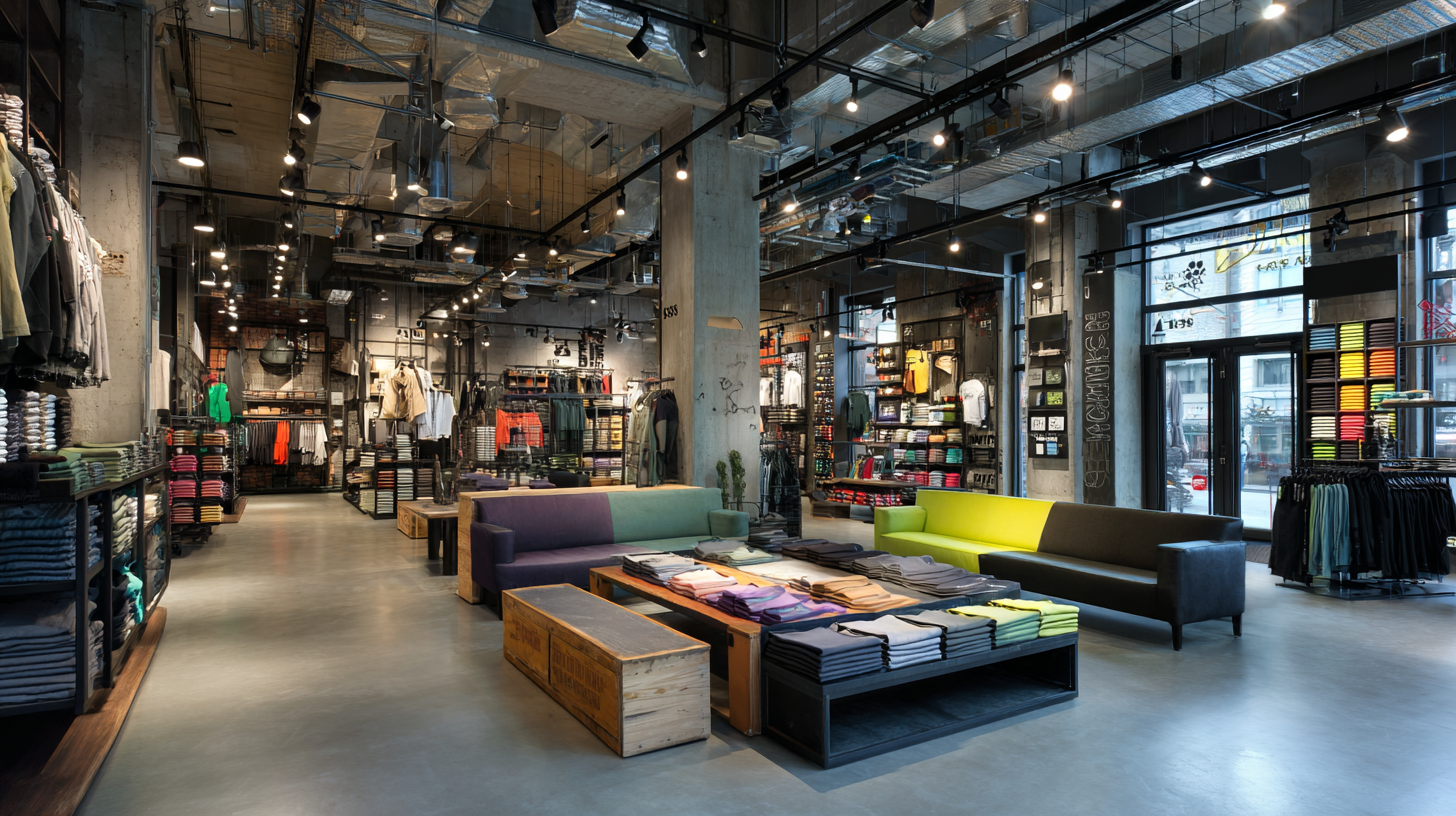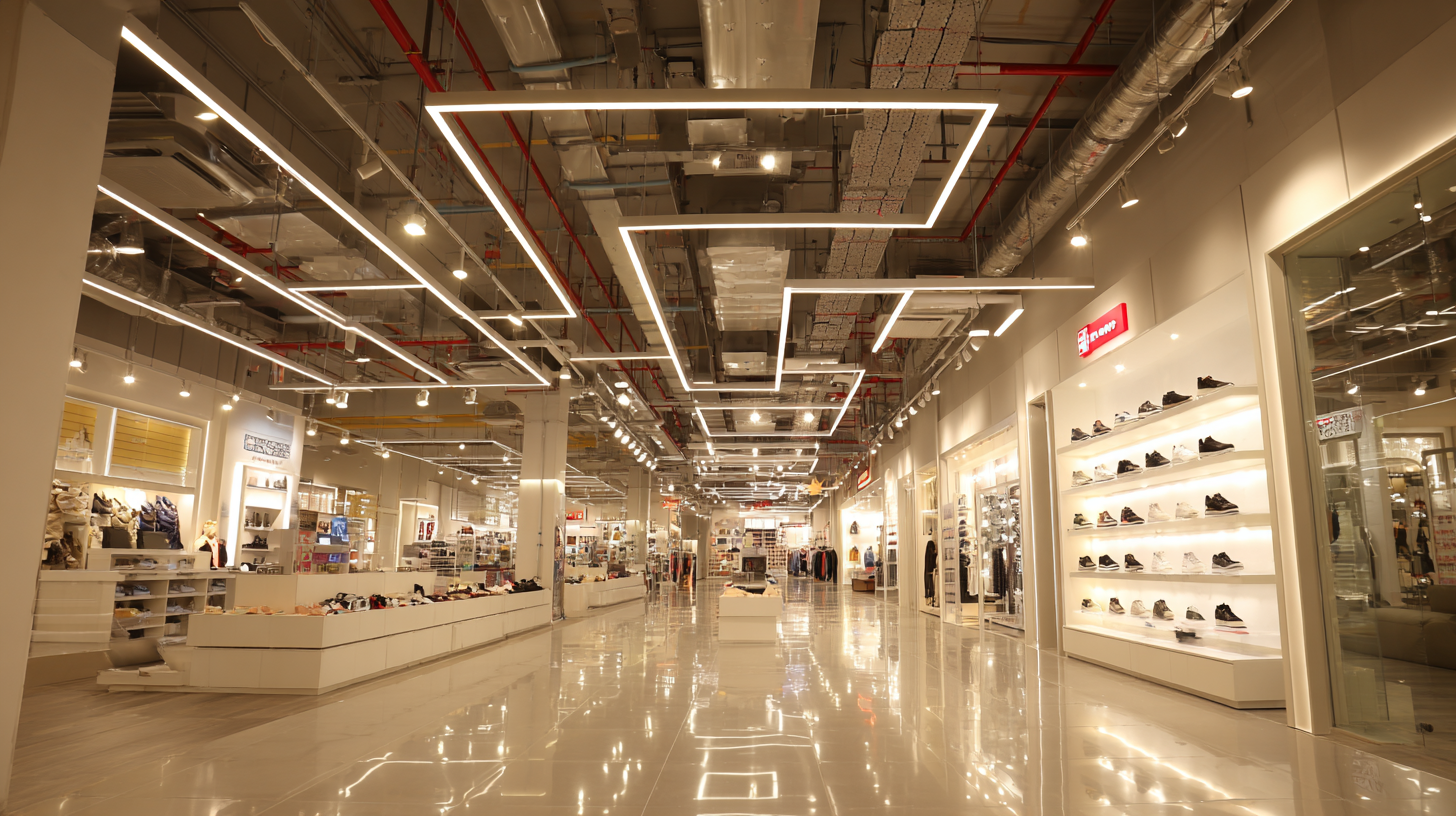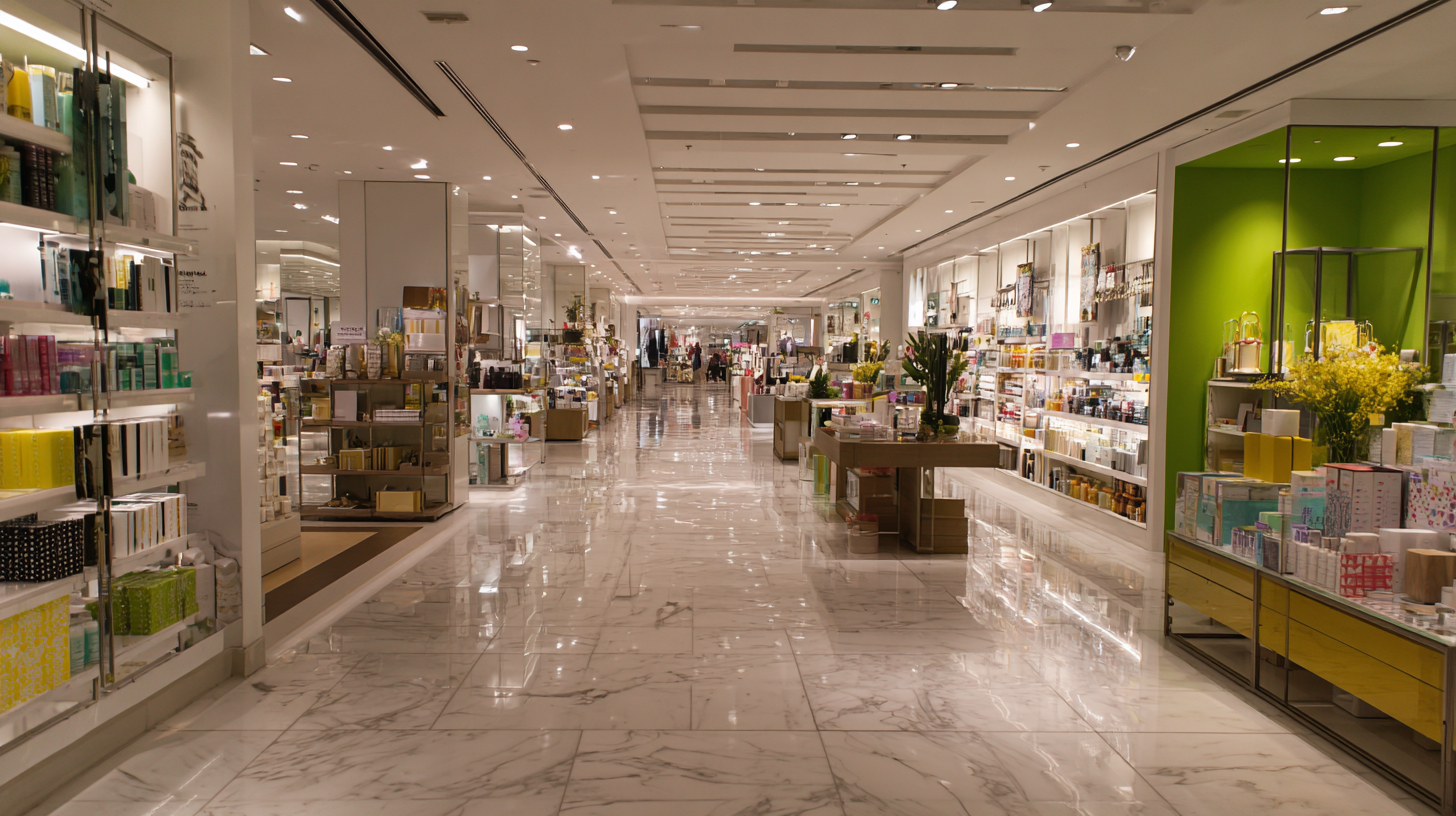7 Compelling Reasons Why Best Retail Lighting Transforms Your Store Experience
In the competitive landscape of retail, the significance of effective Retail Lighting cannot be overstated, as it is crucial for enhancing customer experience and driving sales. According to a report by the American Society of Interior Designers, well-designed lighting can increase retail sales by up to 15%, showcasing its powerful influence on consumer behavior. Furthermore, a study published in the Journal of Retailing highlighted that appropriate lighting not only improves the aesthetic appeal of merchandise but also creates a welcoming atmosphere that encourages shoppers to linger longer. As we delve into the seven compelling reasons why best retail lighting can transform your store experience, we will explore how it not only elevates the visual merchandising strategy but also addresses critical aspects such as customer satisfaction, after-sales service advantages, and maintenance costs, positioning retailers for future growth in an evolving market.

The Impact of Effective Retail Lighting on Customer Perception
Effective retail lighting plays a crucial role in shaping customer perception and enhancing the overall shopping experience. According to a study by the Lighting Research Center, 30% of shoppers are more likely to make a purchase when stores use lighting that highlights products effectively. The right lighting not only draws attention to merchandise but also creates a welcoming atmosphere that encourages customers to stay longer. A well-lit store can increase foot traffic and improve customer mood, ultimately leading to higher sales conversions.

To elevate your store’s lighting, consider the following tips. First, utilize accent lighting to spotlight key products, drawing customers’ eyes directly to high-margin items. Additionally, ensure that the color temperature of your lighting matches the brand image; warmer tones can evoke a sense of comfort while cooler tones can suggest modernity and efficiency. According to a report from the International Council of Shopping Centers, 61% of consumers feel more engaged with brands that utilize effective lighting strategies, underscoring the importance of thoughtful illumination in retail spaces.
Finally, don't overlook the impact of natural light. Incorporating windows or skylights can significantly enhance the shopping experience, making customers feel more connected to the outdoors. A study by the University of Toronto found that stores with more natural light report a 20% increase in customer satisfaction. By carefully curating your store's lighting palette, you can significantly influence customer perception and promote a more enjoyable shopping atmosphere.
Enhancing Product Visibility Through Strategic Lighting Techniques
Effective retail lighting is pivotal in enhancing product visibility and creating an inviting shopping atmosphere. According to the International Journal of Retail & Distribution Management, appropriate lighting can increase sales by up to 30% when products are illuminated in a way that highlights their features. Strategic lighting techniques such as spotlighting, ambient, and task lighting can help draw attention to specific items, making them stand out and enticing customers to engage with the products.
Moreover, research from the Lighting Research Center shows that 67% of shoppers are influenced by store lighting when making purchase decisions. By using warm tones for clothing and accessories or cooler tones for electronics, retailers can enhance the perceived quality of their products. Implementing dynamic lighting strategies also allows stores to create a unique shopping journey, guiding customers through various sections while maximizing product visibility. Incorporating these thoughtful lighting designs not only boosts sales but also elevates the overall shopping experience, encouraging repeat visits and customer loyalty.
Impact of Retail Lighting on Customer Experience
The bar chart below illustrates various aspects of customer experience affected by retail lighting, demonstrating how strategic lighting choices can enhance product visibility and influence purchasing behavior.
Creating a Welcoming Atmosphere with Ambient Lighting Solutions
Ambience plays a pivotal role in retail shopping experiences, impacting both customer mood and purchasing behavior. A study by the Retail Industry Leaders Association indicates that 67% of customers cite store atmosphere as a critical factor influencing their decision to buy. This highlights the importance of effective ambient lighting solutions that can create a welcoming environment. Soft, warm lighting can evoke feelings of comfort and relaxation, encouraging shoppers to spend more time in the store and explore various products.
Tip: To enhance your retail atmosphere, consider using adjustable LED fixtures that allow you to change the lighting tone throughout the day. Warmer tones in the morning and early afternoon promote a cozy feel, while brighter, cooler tones in the evening can energize the environment, making it conducive for late-night shoppers.
Moreover, strategic use of lighting can direct attention to specific areas, guiding customers toward promotions or new products. According to a report from the International Journal of Retail & Distribution Management, well-lit displays can increase product sales by up to 30%. By integrating ambient lighting with your store's layout, you not only improve visibility but also create an engaging shopping experience that captivates and retains customers.
Tip: Incorporate accent lighting to highlight focal points in your store, such as new arrivals or seasonal displays. This not only draws customer attention but also enhances the overall aesthetic appeal, making your retail space feel more curated and inviting.
Leveraging Color Temperature to Influence Shopper Mood and Behavior
The color temperature of retail lighting plays a crucial role in shaping the mood and behavior of shoppers within a store. Warmer color temperatures, typically ranging from 2700K to 3000K, create an inviting and cozy atmosphere that encourages customers to linger. This is particularly effective in settings like clothing boutiques and cafes, where a relaxed ambiance can lead to increased dwell time and greater sales. In contrast, cooler temperatures around 4000K to 5000K evoke a sense of energy and alertness, making them ideal for stores promoting health, technology, and modern products. By carefully selecting the right color temperature, retailers can create an environment that aligns with their brand identity and appeals to their target audience.
Moreover, the emotional response triggered by different light temperatures can directly influence purchasing decisions. For example, grocery stores often employ warmer lights in the produce section to enhance the perceived freshness of fruits and vegetables, while cooler lighting in the frozen food aisle can enhance product visibility and appeal. Understanding the psychological dynamics at play allows retailers to craft unique shopping experiences that not only attract customers but also drive sales. Ultimately, leveraging color temperature effectively transforms the store environment, turning it into a vital tool for enhancing both customer satisfaction and business success.
7 Compelling Reasons Why Best Retail Lighting Transforms Your Store Experience
| Reason | Color Temperature (K) | Impact on Mood | Expected Behavior |
|---|---|---|---|
| Enhances Visual Appeal | 3000K | Warm and Inviting | Increased Browsing Time |
| Influences Purchase Decisions | 4000K | Neutral and Balanced | Higher Conversion Rates |
| Encourages Exploration | 5000K | Bright and Energetic | Longer Store Visits |
| Boosts Employee Productivity | 6500K | Cool and Focused | Improved Staff Performance |
| Creates a Welcoming Environment | 2700K | Comfortable and Cozy | Increased Customer Retention |
| Highlights Merchandise | 3500K | Inviting Colors | Encourages Impulse Buys |
| Sets the Store's Tone | 4000-6000K | Dynamic Atmosphere | Enhances Brand Perception |
Maximizing Energy Efficiency with Innovative Lighting Technologies
Maximizing energy efficiency in retail spaces is becoming increasingly vital as innovations in lighting technologies revolutionize the shopping experience. Recent trends indicate that advanced lighting solutions, such as smart lighting systems and energy-efficient LEDs, can lead to a significant reduction in energy consumption, offering retailers an opportunity to cut costs while enhancing ambiance. As reported in a comprehensive guide on the smart lighting industry, the market is projected to grow rapidly, fueled by innovations aimed at reducing energy usage by up to 80% compared to traditional lighting methods.
Furthermore, the integration of innovative technologies is not limited to lighting alone; the rise of indoor solar energy solutions exemplifies how retailers can maximize energy efficiency. Researchers at Kaunas University of Technology have synthesized materials for indoor solar cells that can optimize light energy utilization, potentially providing a sustainable energy source for retail environments. By incorporating these groundbreaking technologies, stores can not only enhance their lighting efficiency but also align with growing consumer preferences for eco-friendly practices, thereby enriching the overall shopping experience in a sustainable and cost-effective manner.

